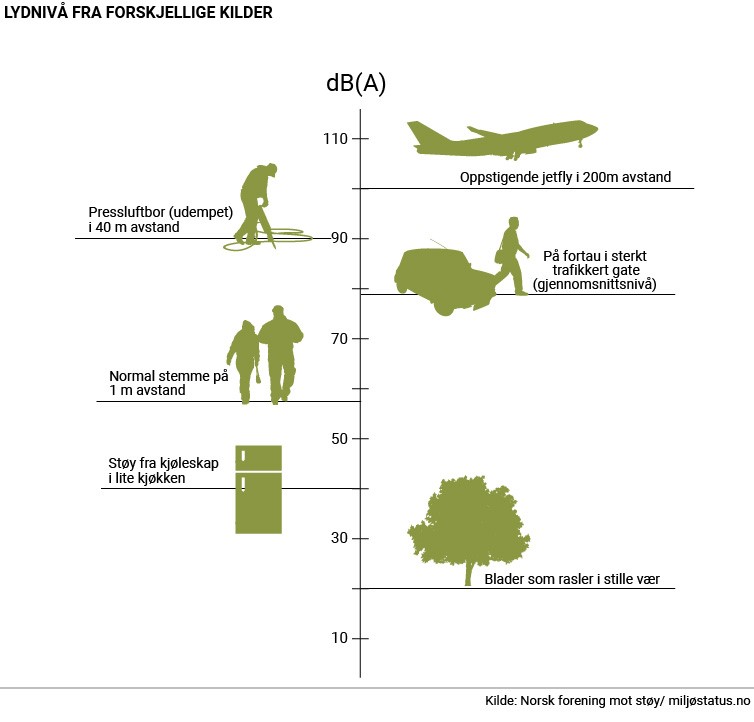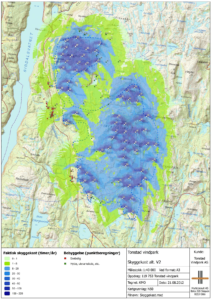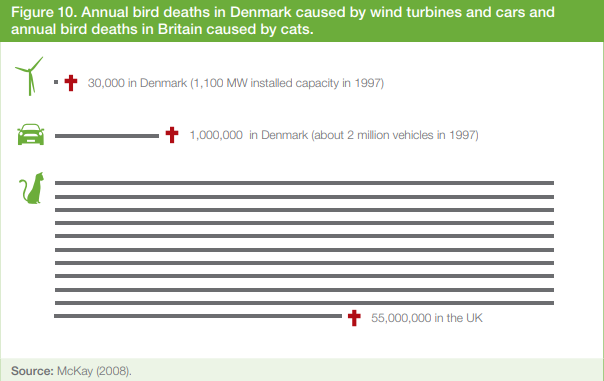Myths about wind power
– Wind turbines make noise
Wind turbines make noise: Research has enabled the reduction of noise from the turbine blades. By increasing the thickness of the edge of the blades and rotating the turbines with the wind, the aerodynamic noise is reduced. The Norwegian Environment Agency defines noise as anything over 45dB. This equates to the noise from a refrigerator in a small kitchen. This is the estimated noise emitted from a turbine at a distance of 300m.
– Shade flicker will affect residences in the area
Shade flickers arise when the blades of the turbine rotate between the sun and an observation point. The blades create a shift between light and shade when they swipe in front of the sun. Potential shade flicker is accounted for in the process of developing wind farms. There will be parts of the year with cloudy weather and there may also be low wind periods where the blades do not rotate. This map gives an overview of which areas will be affected by shade flicker from the turbines in Tonstad Vindpark.
– Wind turbines are visually unappealing
Some decades ago, wind turbines were produced whose design would never be approved today. This is because there are now more strict rules for the appearance of wind turbines. Additionally, wind farms are usually placed in areas with little residential settlement. Increasingly, public opinion come to consider wind turbines as a modern symbol of sustainable development. A study conducted by Prof. Hubner in Germany, concluded that 80% of those residing in close proximity to wind farms have a positive opinion of them.
– Birds collide with wind turbines
The effect of wind turbines on birds has been thoroughly researched. Studies have looked at the scope of collisions with wind turbines and subsequent effects on population dynamics and migration patterns. The most significant dangers to birds are direct collision with the turbine blades and loss of habitat as a consequence of the infrastructure of the wind farm.
Potential adverse impacts on birds must be assessed in the concession process with the Norwegian Water Resources and Energy Directorate, before a wind farm project can be granted a concession. In order to reduce impact on birds, wind farms should be placed outside of the migratory routes of birds. In accordance with the concession, Tonstad Vindpark has placed a buffer zone of 1000m between the farm and nest sites of certain species of bird. This reduces the impact on bird habitats in the area.
Even though wind farms constitute a stress factor for certain types of bird species, the effect of wind farms on animal life is significantly lower than from fossil fuel plants, nuclear power plants and other manmade stress factors. Take the following example. In Denmark, approximately 1 million birds are killed annually from automobile traffic, compared to 30,000 by wind farms.
– Wind farms do not contribute to tax income for the municipalities in which they are located:
Wind farm developments are large investments and often provide good incomes for the local societies where the wind farms are located. For instance, Tonstad Wind farm will provide Sirdal and Flekkefjord municipalities revenue in the form of property tax. Additionally, the construction and subsequent operation of the wind farm creates jobs. Land- and cabin owners are also compensated.
– Natural areas are closed off
Compared with other types of power plants, wind farms occupy a relatively small area. In fact, a wind farm can often yield access to areas that only a few previously had. For instance, Tonstad Vindpark covers an area of 26.1 km2 but only 2% of this area is actually occupied by the wind farm infrastructure. Additionally, roads are being constructed where the public is free to roam freely once the wind farm has been completed.
– Wind power is not really environmentally friendly
Studies show that for land-based wind farms, it will take between 4.5 and 5.5 months to generate the amount of energy the park itself consumes in the course of its lifetime, when assuming an average wind speed of 8 m/s. All the remaining energy is transported to the grid and contributes towards the zero-carbon energy transition.



